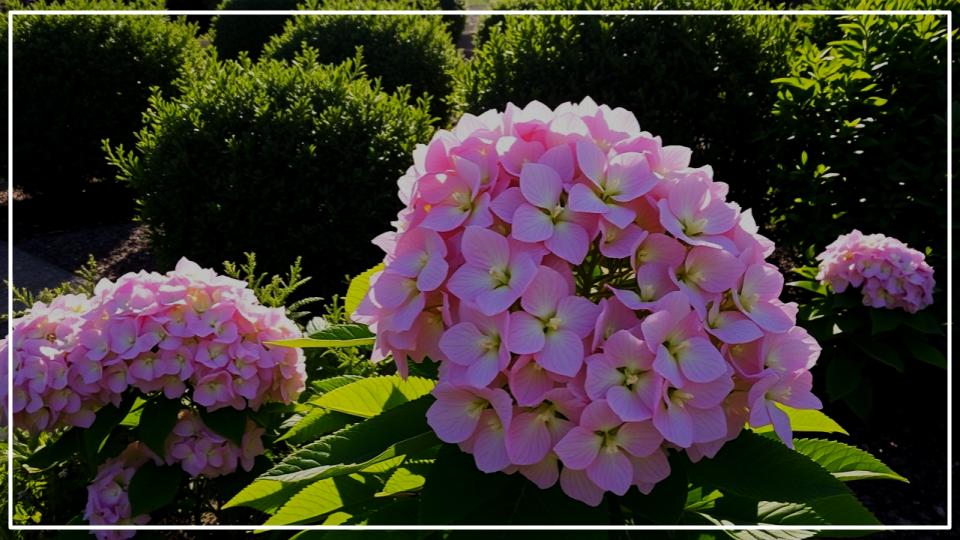
A truly beautiful garden shouldn’t be a chore. It should be a sanctuary, a place of quiet joy and beauty that gives back far more than it takes. We all dream of a lush landscape filled with color and texture, but the reality of constant watering, pruning, and fussing can feel overwhelming. What if the secret wasn’t about working harder, but choosing smarter? It is. The solution lies in selecting gorgeous, resilient, and Shrubs That Practically Take Care of Themselves once established. These are the workhorses of the garden, providing a stunning backdrop for every season with very little asked of you.
Let’s explore some of my absolute favorite, fuss-free shrubs that will bring enduring beauty to your landscape.
Quick Guide to an Effortless Garden
Here are the key principles for creating a beautiful, self-sustaining garden:
- Right Plant, Right Place: Match a shrub’s needs (sun, water, soil) to your garden’s conditions. This solves 90% of potential problems.
- Mulch is Your Best Friend: A 2-3 inch layer of organic mulch conserves water, suppresses weeds, and improves the soil as it breaks down.
- Think in Layers: Combine shrubs of different heights, textures, and bloom times for a landscape that has year-round interest.
- Water Deeply, Not Daily: When establishing new plants, water deeply and infrequently to encourage strong, deep root growth, leading to more Shrubs That Practically Take Care of Themselves.
The Secret to a Truly Low-Maintenance Garden
Before we dive into the plants themselves, I want to share the most important principle I’ve learned over decades of designing gardens: “Right Plant, Right Place.” It’s a simple mantra that horticulturalists live by, and it’s the absolute foundation of an easy-care garden. It means choosing plants that will naturally thrive in the sunlight, soil, and moisture levels you already have. Forcing a sun-loving plant into a shady corner or a moisture-loving fern onto a dry, windy hill is a recipe for constant struggle.
When you honor a plant’s inherent needs, you create a garden that works with nature, not against it. The shrubs on this list are already tough and adaptable, but placing them in their preferred conditions makes them virtually indestructible. A common mistake I see is gardeners failing to consider a shrub’s mature size, leading to endless pruning down the road. Always plan for the plant’s full-grown dimensions to save yourself that future headache.
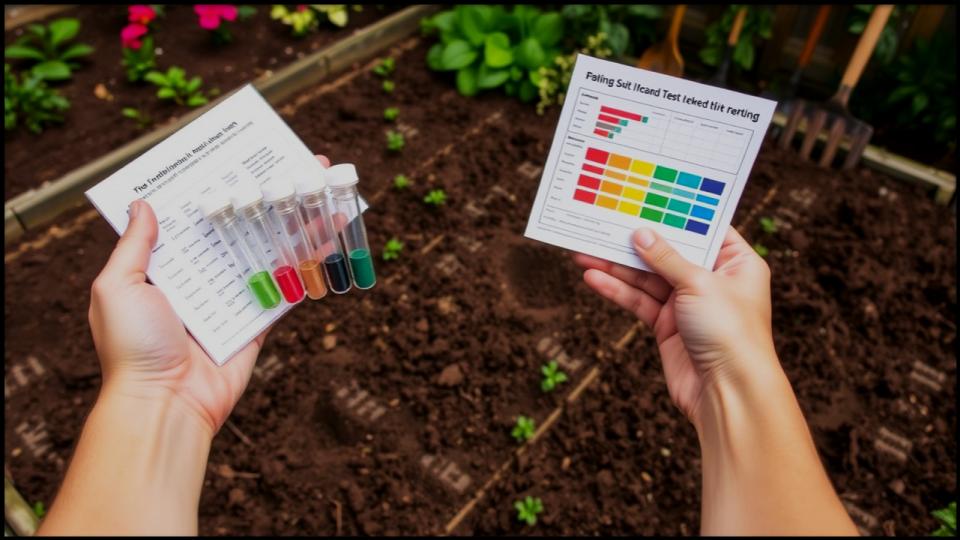
Our 8 Favorite Low-Maintenance Shrubs for Gorgeous Results
Here are eight of the most reliable and beautiful easy-care shrubs I recommend to clients and use in my own garden. They have been selected for their beauty, resilience, and ability to provide multi-season appeal.
1. Panicle Hydrangea (Hydrangea paniculata)
Forget the fussy, color-changing hydrangeas of the past. Panicle hydrangeas are a game-changer. They bloom reliably every year on new wood, meaning a harsh winter or a misstep in pruning won’t rob you of a spectacular show. Their large, cone-shaped flowers emerge a creamy white in mid-summer and gradually age to stunning shades of pink, red, and lime green, often holding their color well into the fall. In my garden, the dried flower heads provide wonderful structure and interest against a snowy winter backdrop.
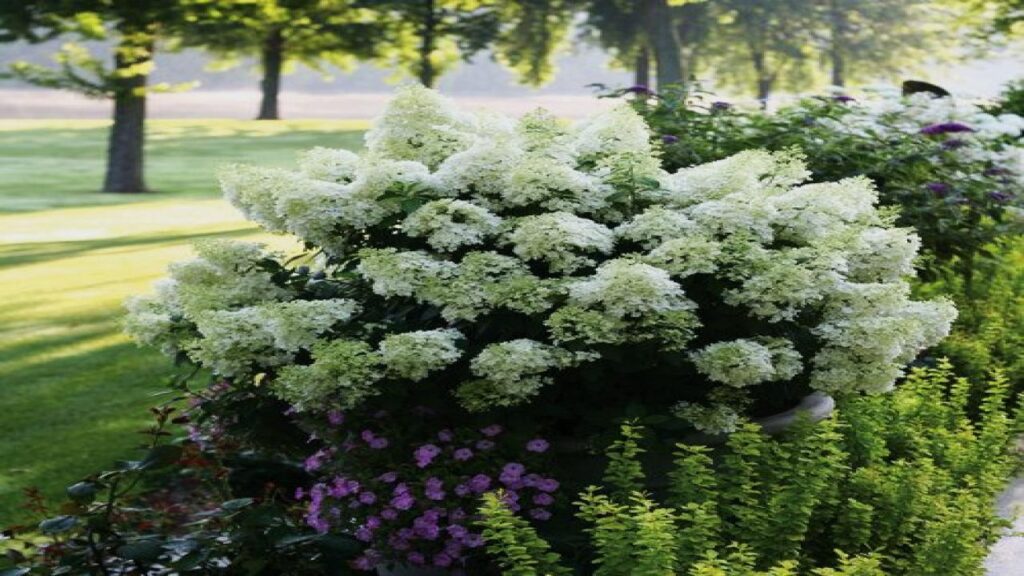
- Why You’ll Love It: Tolerant of full sun, incredibly cold-hardy, and their sturdy stems don’t flop over after a rainstorm.
- Standout Varieties: ‘Limelight’ is a classic for its enormous, chartreuse blooms. For smaller spaces, ‘Little Lime’ or ‘Bobo’ offer the same beauty in a more compact package.
- Expert Tip: Prune them back by about one-third in late winter or early spring to encourage strong new growth and a prolific display of flowers. According to the Purdue University Extension, this simple annual trim is all they really need.
2. Spirea (Spiraea japonica)
If you’re looking for a pop of brilliant color from spring through fall, look no further than Japanese Spirea. These compact, mound-forming shrubs are prized not just for their clusters of pink or white flowers in early summer, but for their vibrant foliage. New growth often emerges in fiery shades of red or orange before settling into bright yellow, chartreuse, or deep green. They are troopers, unfazed by poor soil, heat, or urban pollution.
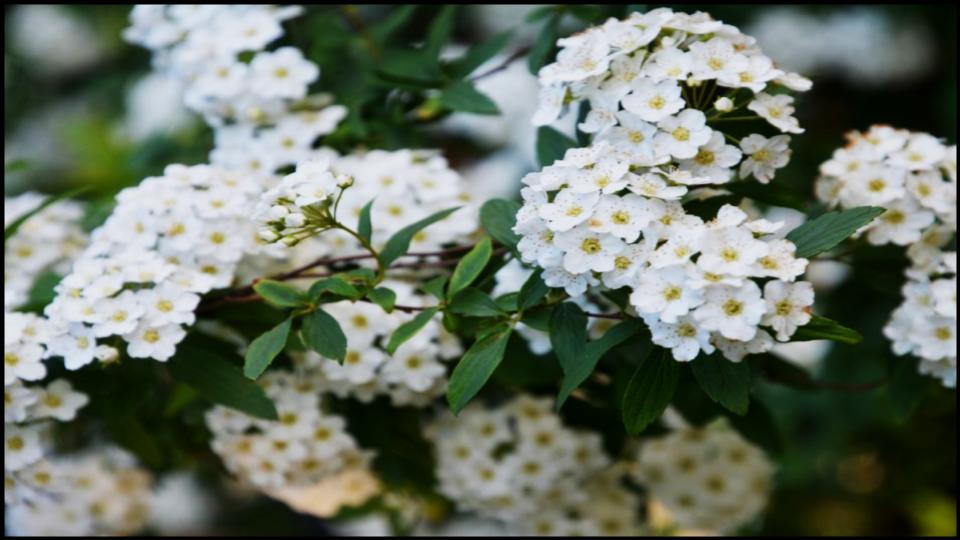
- Why You’ll Love It: Extremely adaptable, deer-resistant, and many newer varieties are neat and compact without any pruning.
- Standout Varieties: ‘Goldflame’ offers a season-long color show with leaves that start bronze-red, turn yellow-green, and finish with a coppery-orange in the fall. ‘Magic Carpet’ is another low-growing winner with rosy-pink flowers.
- Expert Tip: A light shear right after the first flush of flowers fade will often encourage a second, smaller bloom later in the summer.
3. Ninebark (Physocarpus opulifolius)
For dramatic, season-long color and texture, Ninebark is an absolute must-have. Native to North America, this shrub is as tough as it is beautiful. Its main draw is its striking foliage, which comes in rich shades of burgundy, copper, and near-black. In early summer, it produces delicate clusters of white or pinkish flowers that are a magnet for pollinators. As a bonus, its bark peels back in layers (hence the name “ninebark”), revealing different colors and providing fantastic year-round interest.
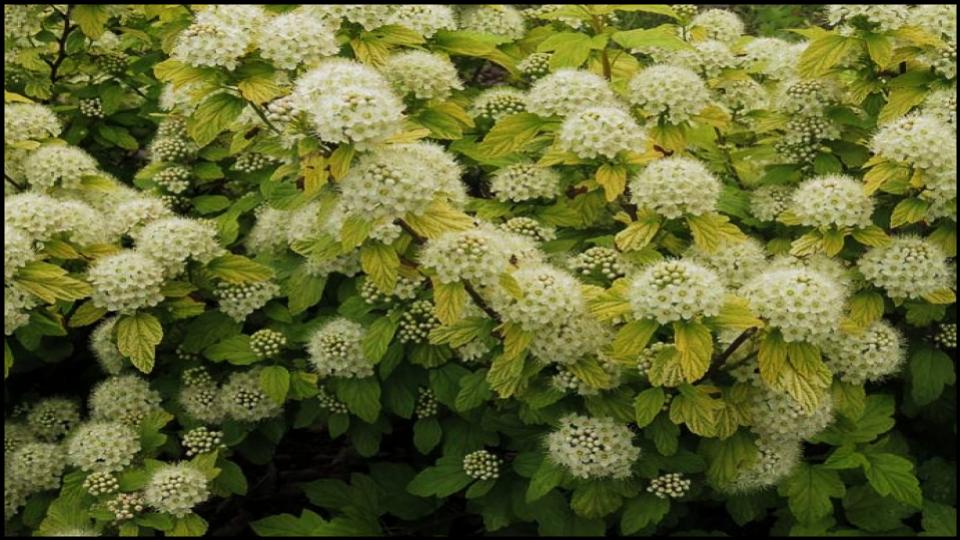
- Why You’ll Love It: It’s one of the most rugged Shrubs That Practically Take Care of Themselves once established and is rarely bothered by pests or diseases.
- Standout Varieties: ‘Diabolo’® (also sold as ‘Monlo’) is famous for its deep purple foliage. ‘Summer Wine’® is a slightly more compact version with fine, deeply cut, wine-red leaves.
- Expert Tip: In my experience, Ninebark has the richest, deepest color when planted in full sun. In shadier spots, the color tends to fade to a greenish-bronze.
4. Weigela (Weigela florida)
The trumpet-shaped flowers of Weigela are simply irresistible to hummingbirds. These graceful, arching shrubs put on a massive floral display in late spring, and many modern cultivars will continue to rebloom throughout the summer. While older varieties could get a bit rangy, the newer selections are dense, compact, and offer stunning foliage in shades of bronze, purple, and variegation, making them attractive even when not in bloom.
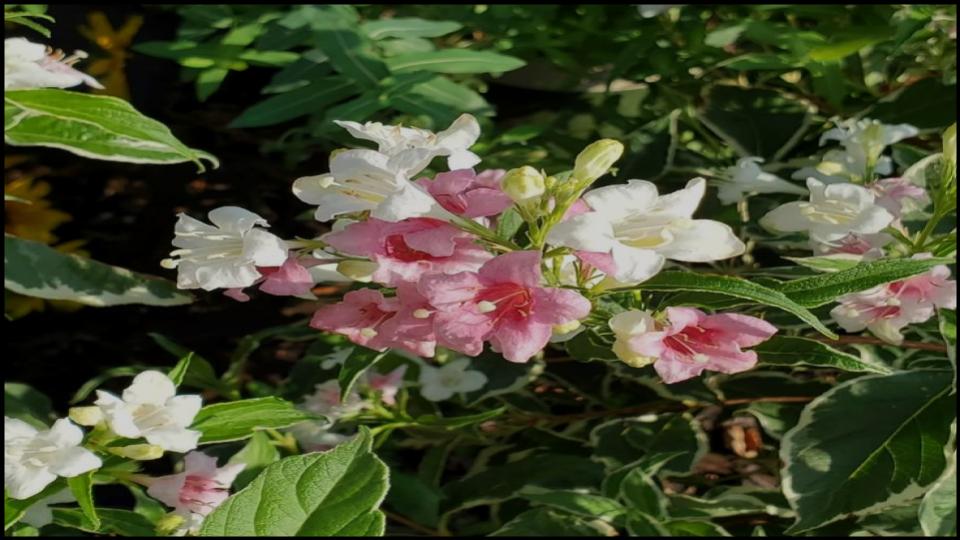
- Why You’ll Love It: Attracts pollinators, many varieties are reblooming, and they are generally trouble-free.
- Standout Varieties: The ‘Wine & Roses’® series is iconic for its combination of dark burgundy foliage and vibrant rosy-pink flowers. For tight spaces, ‘Spilled Wine’® has a lower, wider habit.
- Expert Tip: Don’t be afraid to prune Weigela right after its main spring bloom. This is when it sets the buds for next year’s flowers, a fact confirmed by experts at the University of New Hampshire Extension.
5. Smoke Bush (Cotinus coggygria)
If you want a true “wow” moment in your garden, plant a Smoke Bush. In mid-summer, it covers itself in large, airy flower panicles that look like puffs of pink or beige smoke, creating a breathtaking, ethereal effect. The oval leaves are just as lovely, coming in shades of deep purple, gold, or blue-green. It’s a large shrub that makes a fantastic focal point.
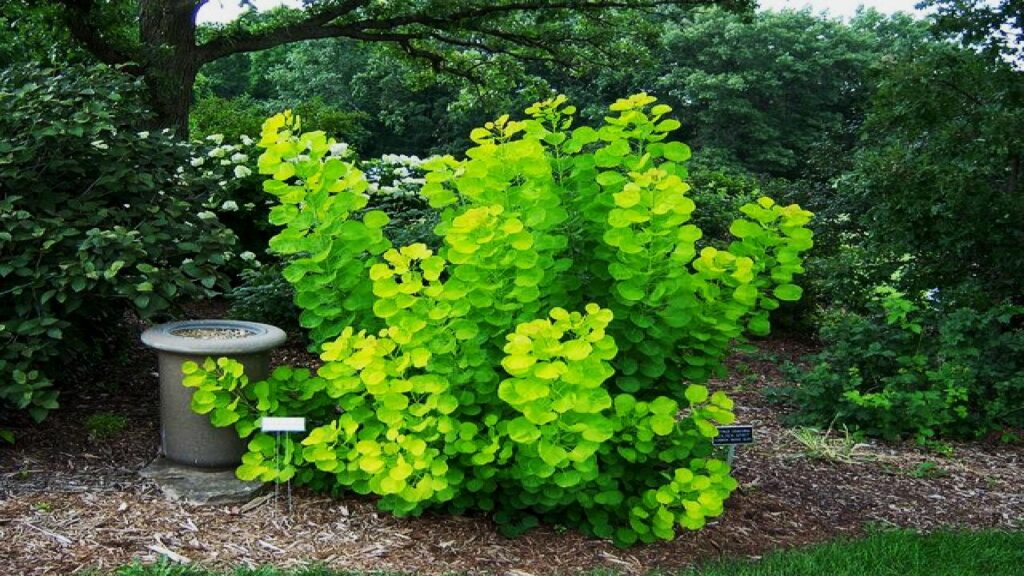
- Why You’ll Love It: Unique and dramatic appearance, very drought-tolerant once established, and offers a long season of interest.
- Standout Varieties: ‘Royal Purple’ is the classic choice for its rich, reddish-purple leaves. ‘Golden Spirit’ is a brilliant gold that resists scorching in the sun.
- Expert Tip: You can grow Smoke Bush in two ways. Let it grow naturally for the smoky blooms, or prune it hard to the ground each winter (a technique called coppicing). This sacrifices the flowers but encourages the plant to produce larger, more vibrant foliage. It’s a trick I use to get the most intense leaf color.
6. Shrubby Cinquefoil (Potentilla fruticosa)
When it comes to sheer flower power, few shrubs can compete with Potentilla. This workhorse plant starts producing its charming, buttercup-like flowers in late spring and doesn’t stop until the first hard frost. It is incredibly hardy, thriving in conditions that would stress other plants, including poor soil, cold climates, and drought. It’s a fantastic choice for a low border or mass planting.
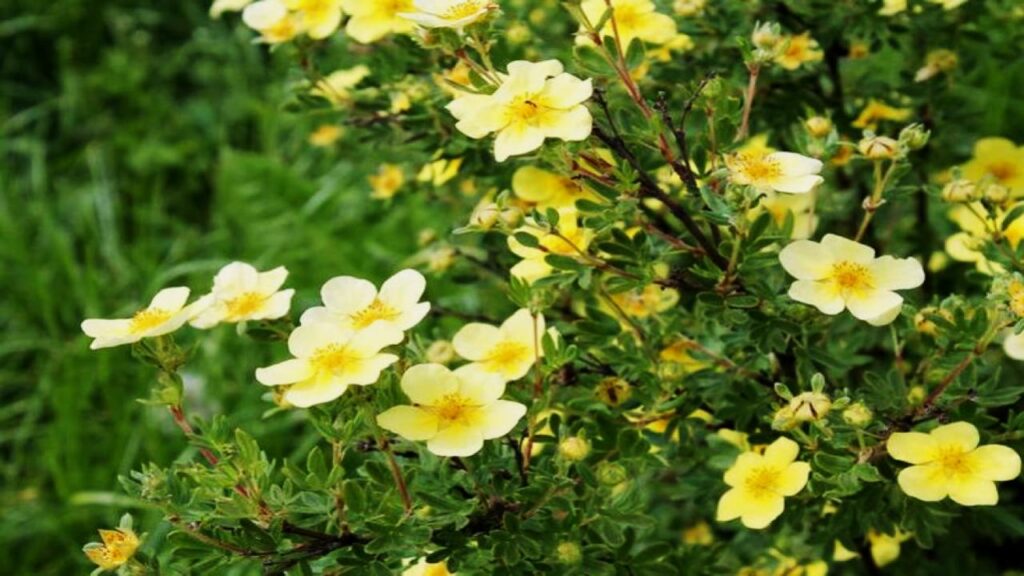
- Why You’ll Love It: One of the longest-blooming shrubs available, extremely cold-hardy (down to Zone 2!), and requires virtually no care.
- Standout Varieties: While classic yellow varieties like ‘Goldfinger’ are common, look for newer options in shades of white (‘Abbotswood’), pink (‘Pink Beauty’), and orange-red (‘Mango Tango’).
- Expert Tip: Potentilla can get a bit woody and overgrown after several years. To rejuvenate an older plant, simply cut it back by about two-thirds in late winter. It will bounce back looking better than ever.
7. Arrowwood Viburnum (Viburnum dentatum)
I often recommend Arrowwood Viburnum to clients who want a shrub that does it all. This North American native offers something beautiful in every season. In late spring, it’s covered in creamy-white flower clusters that pollinators adore. These give way to beautiful blue-black berries in late summer that provide a crucial food source for birds. To top it off, the leaves turn into a gorgeous display of yellow, orange, or red in the fall.
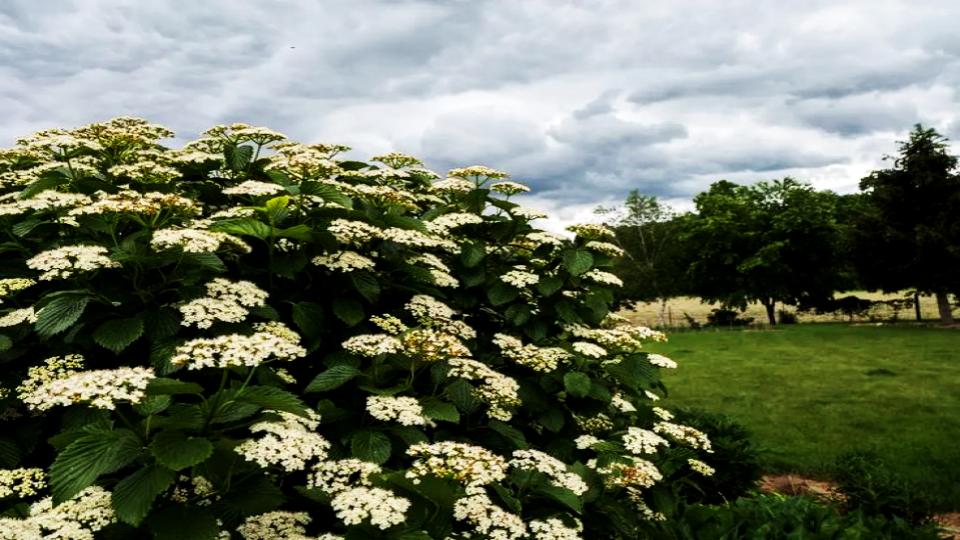
- Why You’ll Love It: A true four-season plant, provides food and shelter for wildlife, and is exceptionally adaptable. As the Missouri Botanical Garden notes, it has no serious insect or disease problems.
- Standout Varieties: ‘Blue Muffin’ is a popular compact selection that’s great for residential gardens and known for its intense fruit set.
- Expert Tip: For the best berry production, you’ll need to plant more than one Arrowwood Viburnum to ensure good cross-pollination.
8. Creeping Juniper (Juniperus horizontalis)
No list of easy-care shrubs would be complete without a tough, evergreen groundcover. Creeping juniper is the ultimate solution for covering a sunny slope, sprawling over a rock wall, or suppressing weeds in a tough spot. Its low-growing, mat-forming habit creates a carpet of foliage that can range from steel-blue to deep green, often taking on purplish tones in winter. It’s the definition of “plant it and forget it.”
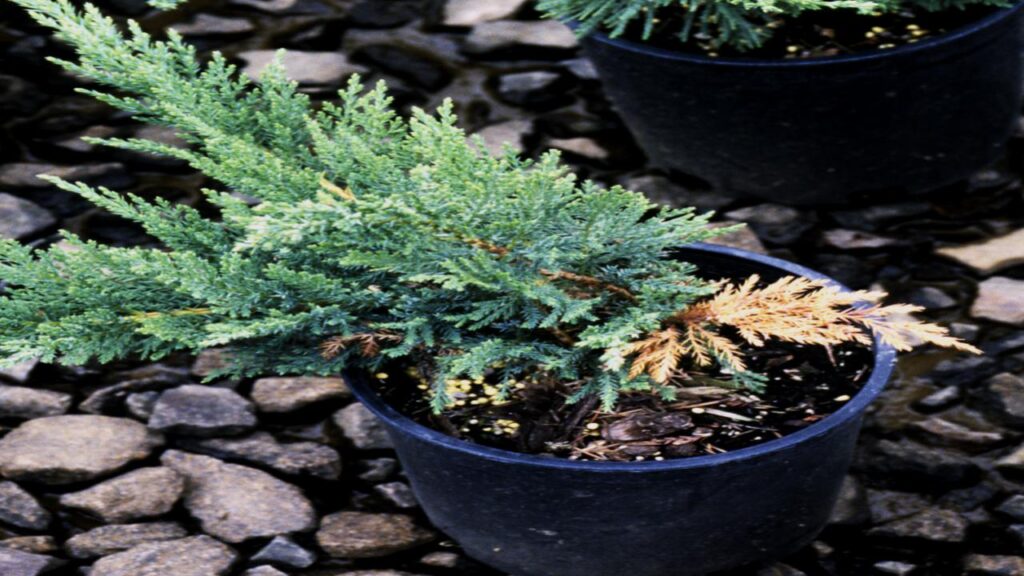
- Why You’ll Love It: Thrives in hot, sunny, and dry locations, provides evergreen color, and is excellent for erosion control on hillsides.
- Standout Varieties: ‘Blue Chip’ is prized for its silvery-blue foliage. ‘Wiltonii’ (also known as ‘Blue Rug’) is exceptionally flat and creates a dense, weed-proof mat.
- Expert Tip: The biggest mistake people make with creeping juniper is overwatering it. Once established, it is profoundly drought-tolerant and performs best in well-drained soil.
A Garden That Gives Back
Choosing the right plants is the first step toward creating a garden that nurtures your spirit instead of draining your time. These eight gorgeous, resilient shrubs prove that a stunning landscape doesn’t have to be demanding. By embracing the simple wisdom of placing the right plant in the right place, you can cultivate a personal oasis that will reward you with season after season of effortless beauty. Now you have the knowledge and the confidence to plant a garden that truly takes care of itself, leaving you more time to simply sit back and enjoy it.
Read More
This Is How the Pros Plant Grass Seed for That Perfect Lawn Look
